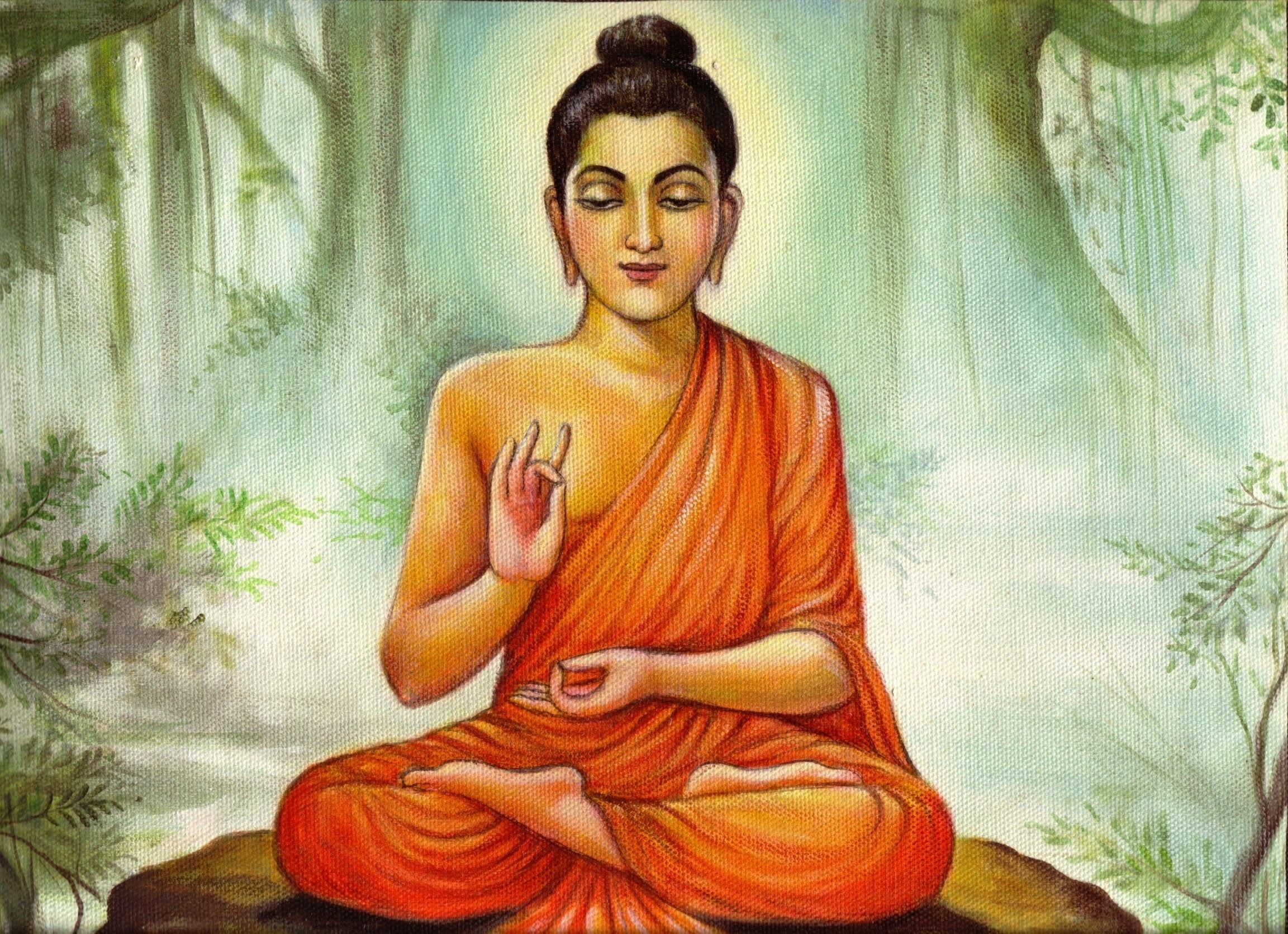[NSFW] The BDSM Path to Zen
post by lsusr · 2025-02-24T13:05:09.624Z · LW · GW · 9 commentsContents
9 comments
Picture the following situation:
You're in bed with a hot woman. Your clothes are off and so are hers. You (consentually) tie her wrists and ankles to the bed so you can have your way with here. She tells you to do whatever you want with her. And you think to yourself…
This is exactly like what we do at my Buddhist temple.
I'm not part of a sex cult. I just noticed that subspace, the altered state of consciousness induced by BDSM, is very similar to mushin, the altered states of consciousness induced by Zen Buddhist non-dual meditation. I think the only reason they're called different words is a historical accident, because famous ascetic Buddhist monks and nuns rarely write about all the rope play they engage in while they're having kinky sex with each other.
Buddhism various altered states of consciousness to explore the mind. Many of these altered states of consciousness are jhanas. A jhana is what happens when you focus your attention on a stable target for a long period of time. Jhanas feel great. Mushin is another altered state of consciousness that also feels great, and is reached via a similar (but not quite the same) path. Mushin is notoriously difficult to describe declaratively. All you need to know about mushin to understand this post is that mushin is an altered state of consciousness similar to jhana.
Subspace feels great too. Subspace feels so good it usually turns pain into pleasure. You know what else blurs the line between pain and pleasure? Mushin.
That's not the only similarity. Mushin and subspace are both characterized by the absence of willful volition tied to your sense of self. With Mushin, this (at first) is because you stop doing anything except breathing). In subspace, this is because you don't do anything except what your Dominant tells you to. The effect is like Tantra, except instead of moving your locus of volition into an imagined deity, you transfer it into another person.
The final clue that made me realize that subspace and mushin are independent discoveries of essentially the same altered state of consciousness has to do with the "B" part of BDSM: Bondage.
I once gave meditation instructions to a friend. My instructions were brief, and included the line "sit in full lotus, if you can do so safely". Full lotus is the cross-legged sitting position where your ankles rest on top of your thighs.
My friend was flexible enough to sit in the full lotus position, but he ignored that instruction for a long time, assuming it was mere superstition. He recently switched to mediting full lotus and reported that the full lotus position did indeed improve his meditation. The full lotus makes it easier to achieve mushin because it comfortably locks your legs in place so they can't move.
You know what else comfortably locks your limbs in place so they can't move? Rope.
Please don't start a sex cult. But if you do, I recommend you teach your disciples that BDSM is a road to achieving mushin that's like Zen Buddhism, except easier, because it requires no internal source of discipline.
9 comments
Comments sorted by top scores.
comment by Matt Goldenberg (mr-hire) · 2025-02-24T13:49:37.086Z · LW(p) · GW(p)
Fwiw I'll just say that I think jhanas and subspace are different things.
I think subspace is more about flooding the body with endorphins and jhanas are more about down regulating certain aspects of the brain and getting into the right hemisphere.
Although each probably contains some similar aspects.
Replies from: lsusr↑ comment by lsusr · 2025-02-24T14:02:54.353Z · LW(p) · GW(p)
I think you're correct. I have modified my original post to classify subspace as a mushin, instead of as a jhana. Jhana is characterized by stability of attention, which is not characteristic of subspace. Mushin is characterized by the absence of self-originated willful volition, which is absolutely descriptive of subspace.
comment by Michael Roe (michael-roe) · 2025-02-24T14:11:59.982Z · LW(p) · GW(p)
And also, Buddhist nuns do sometimes drop hints.
My understanding is that it is diassproved of to directly say what your own yidam practise is; because that would be boastful. But there are examples of Buddhist nuns saying their own practise isn’t Tara (which would likely be a kriya yoga practise) and leaving you to infer some sort of Higher Yoga Tantra.
comment by Michael Roe (michael-roe) · 2025-02-24T13:46:07.609Z · LW(p) · GW(p)
“famous ascetic Buddhist monks and nuns rarely write about all the rope play they engage in while they're having kinky sex with each other”
No less an authority than His Holiness the Dalai Lama has confirmed that if you’re a monk, the vinaya prohibits you from tantric sex.
But ngakpas are not monks, and are not bound by the monastic code of the vinaya.
e.g. Drukpa Kunley, who returned his monastic vows, was fairly forthright on these matters.
Replies from: lsusr↑ comment by lsusr · 2025-02-24T13:55:34.985Z · LW(p) · GW(p)
Meanwhile, Ikkyū (1394-1481):
Stilted koans and convoluted answers are all monks have,
Pandering endlessly to officials and rich patrons.
Good friends of the Dharma, so proud, let me tell you,
A brothel girl in gold brocade is worth more than any of you[1]
Wild Ways: Zen Poems of Ikkyū, translated by John Stevens, pages 75-76, White Pine Press, 2003, via Wikipedia. ↩︎
comment by Michael Roe (michael-roe) · 2025-02-24T13:37:36.029Z · LW(p) · GW(p)
I think there might be something to this, so the rest of what I have to say is nit-picking, not an objection to the basic premise.
1. In karmamudra, one imagines oneself (and one’s partner) as enlightened beings. The intention to act as you imagine an enlightened beings would act might be an important safeguard against all sorts of badness.
2. An obvious question is whether chöd is rather more BDSM-y than other forms of meditation.
↑ comment by lsusr · 2025-02-24T13:44:03.845Z · LW(p) · GW(p)
The way I look at things, there are multiple dimensions from which a form of meditation can be BDSM-y. For example, metta meditation involves lots of oxytocin,
Somewhere in the multiverse, the keisaku and the spanking crop are called by the same name.
comment by mishka · 2025-02-24T15:40:13.106Z · LW(p) · GW(p)
except easier, because it requires no internal source of discipline
Actually, a number of things reducing the requirements for having an internal source of discipline do make things easier.
For example, deliberately maintaining a particular breath pattern (e.g. the so-called "consciously connected breath"/"circular breath", that is breathing without pauses between inhalations and exhalations, ideally with equal length for an inhale and an exhale) makes maintaining one's focus on the breath much easier.

